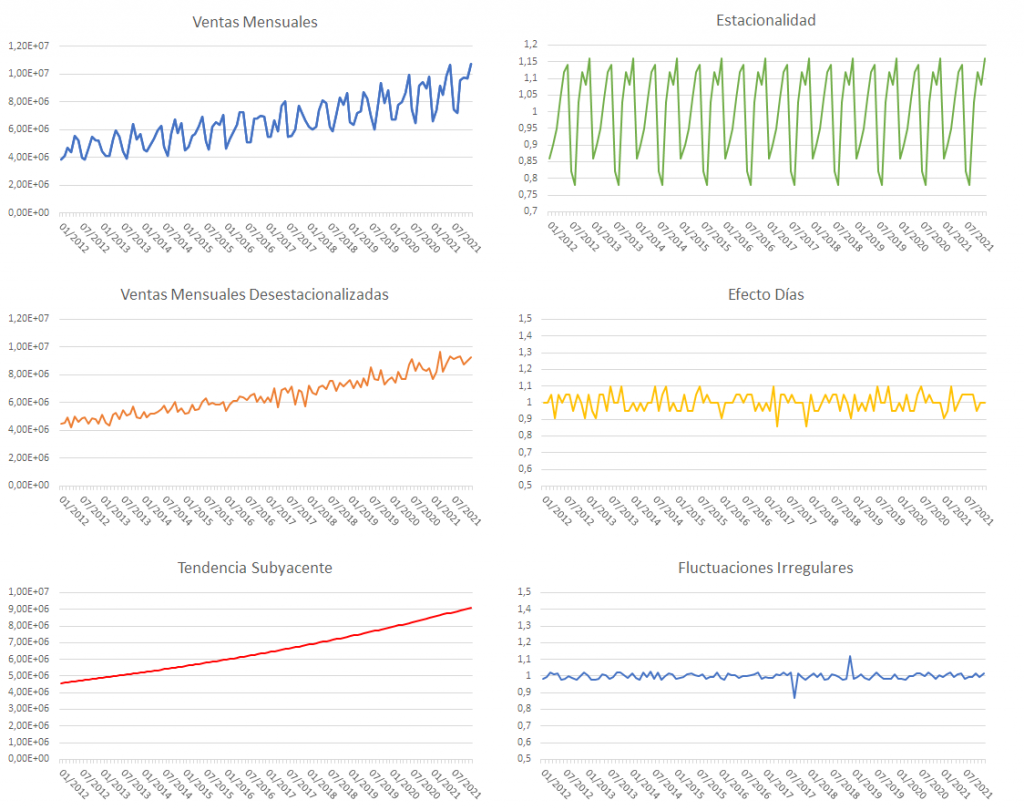
All companies would like to understand in detail how their data behaves over time, but few do a good job at analyzing time series. There are various techniques for analyzing and modeling time series, but here we just want to give some basic concepts for you to understand, and leave the analysis to us: it is our job.
Time series analysis focuses on data collected periodically – every hour, every day, every month – and tries to understand how these data vary over time, whether it is random behavior or if there is a certain pattern in their variation. What defines time series analysis is the periodicity, not the scale, which will depend on what we are analyzing, and even on our ability to act: it is of little use to analyze the daily demand for a product if we only replenish from the warehouse once a week; but we may need to analyze the influx of customers to a location every hour to better adjust the work shifts of flexible staff. And although its uses can be many, it is most commonly used in predictive analysis, or to analyze cause-effect relationships of events anchored in time.
We can say that a time series combines seasonality, which is the repetitive background pattern we observe in our data, irregular fluctuations, which are those that are neither systematic nor seasonal, and therefore not predictable, and the underlying trend, which is what will remain if we remove seasonality and irregulars, and will show us the real long-term evolution of our data. In many cases, when comparing monthly data, fluctuations due to the different number of working days in a month and the same month of the following period are incorporated into irregular fluctuations, but is also possible to show this effect explicitly.

The previous figure shows the monthly sales data of a company for 10 consecutive years, and its multiplicative decomposition into seasonality, days effect, base trend, and irregular fluctuations, with some spikes that can be due to a limited campaign or to a strike (we need to cross these spikes in time with known events to find the culprit).
Analyzing the distribution of events on the calendar, and given the dates we are in, all data points to the fact that 25th is Christmas Day. From Melioth Digital Services, we wish you a Merry Christmas, and all the best for 2023.
